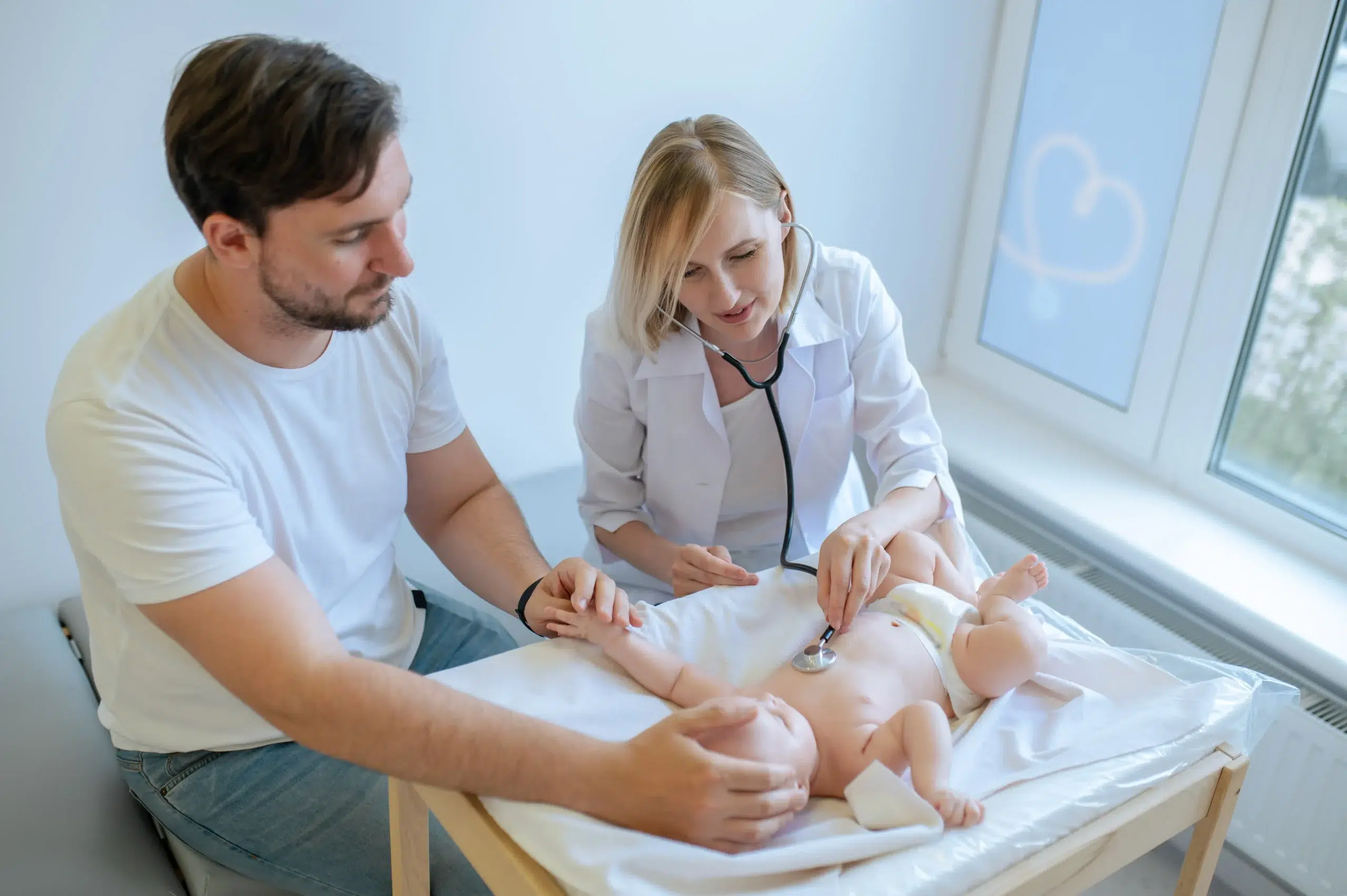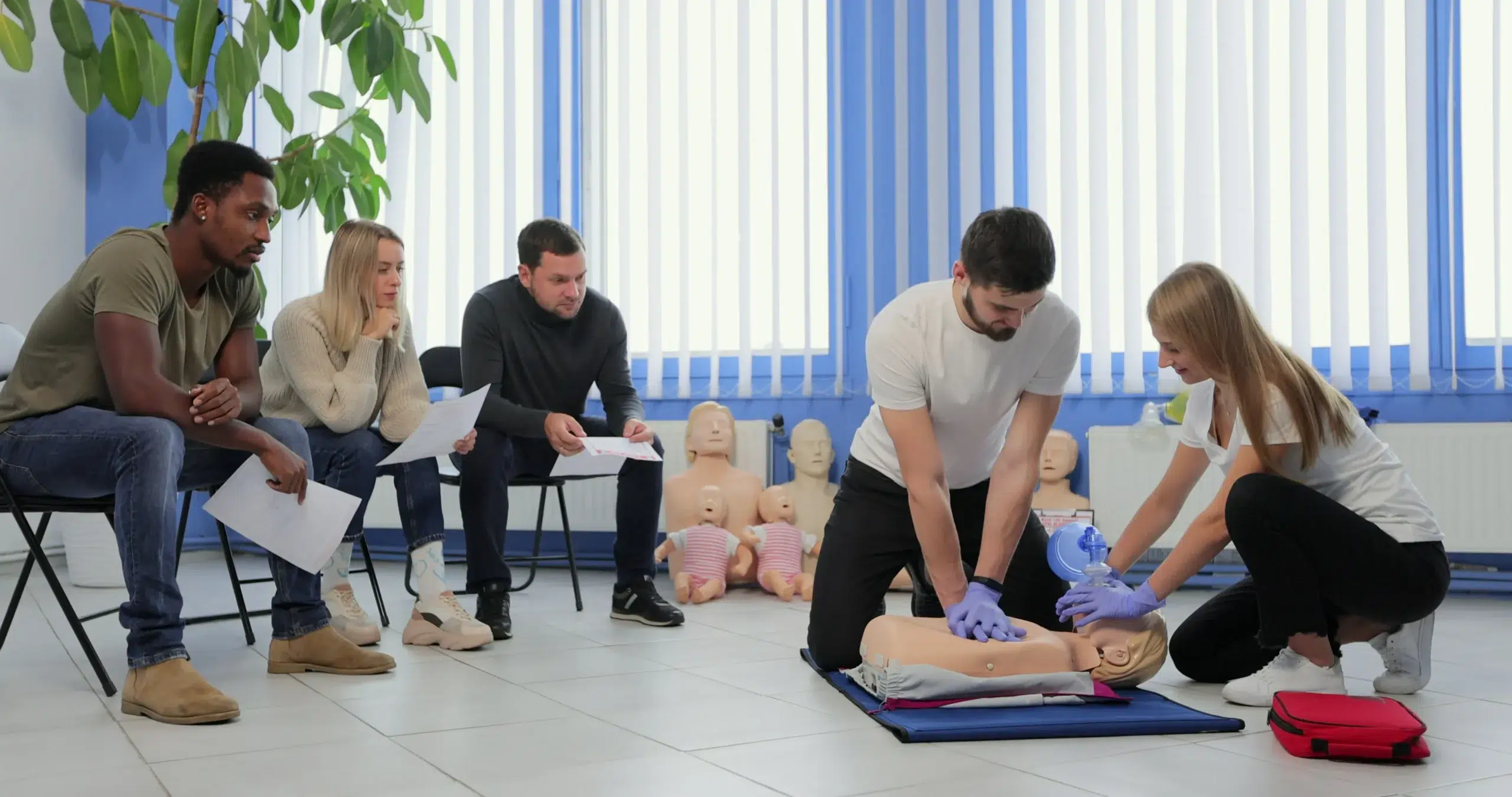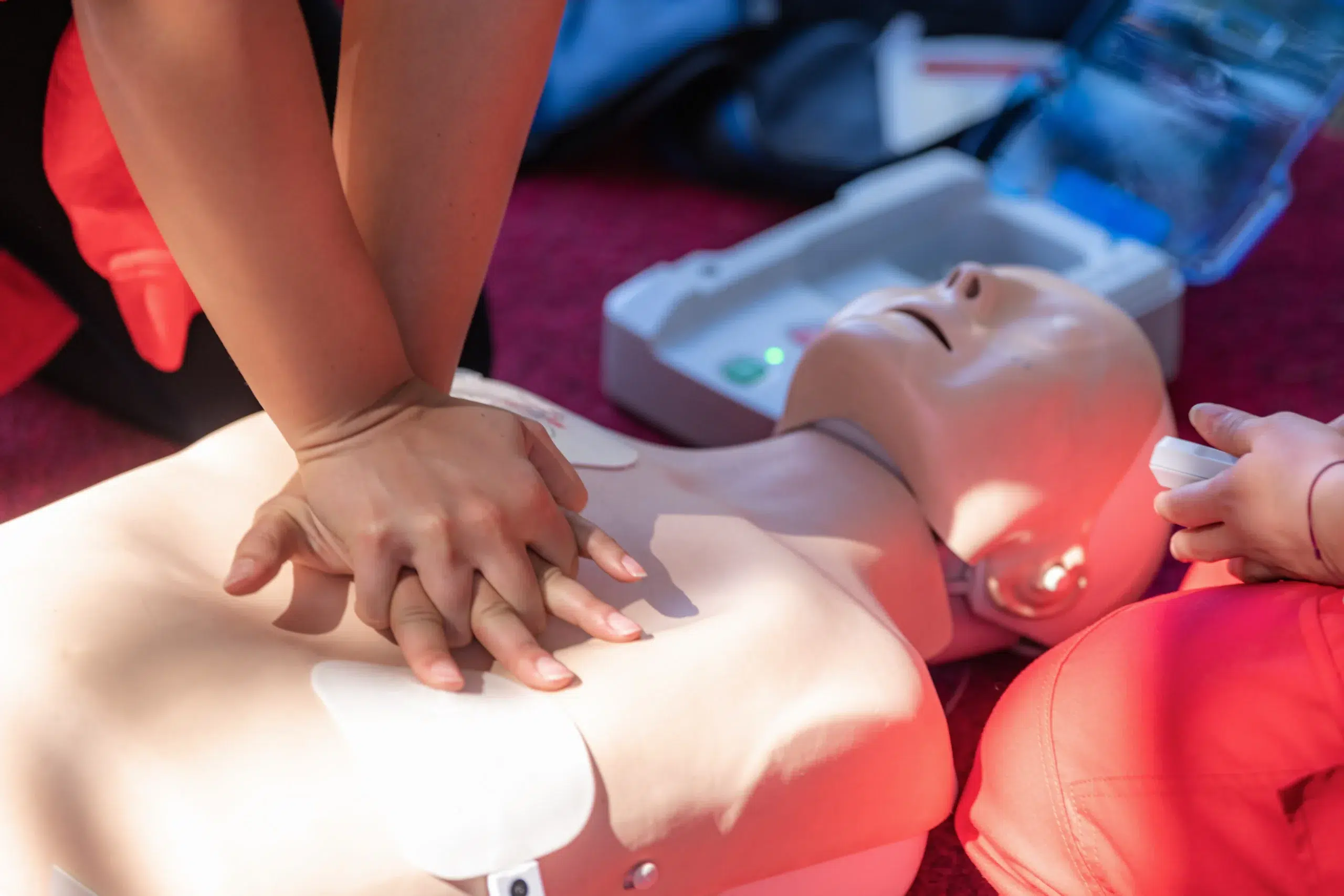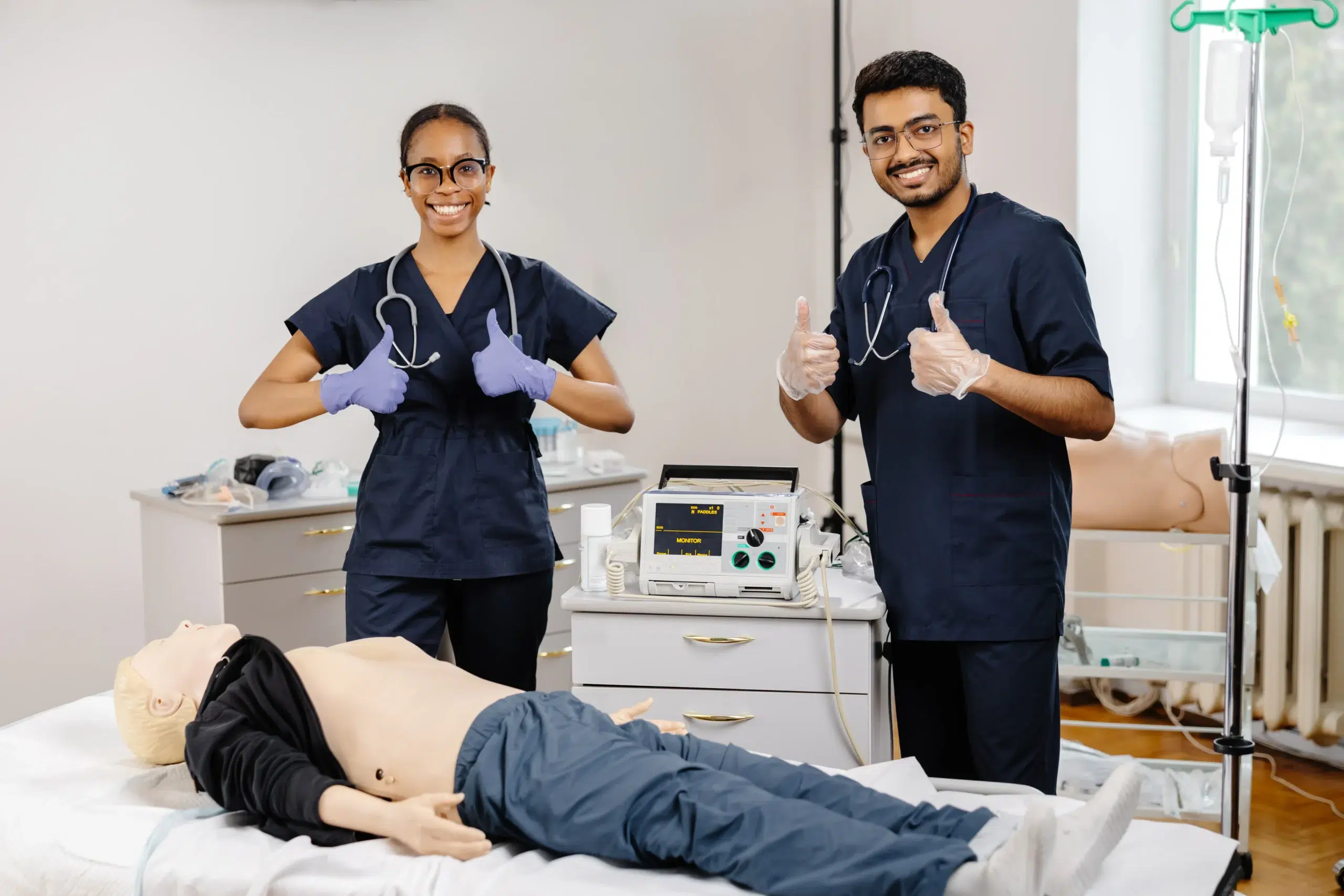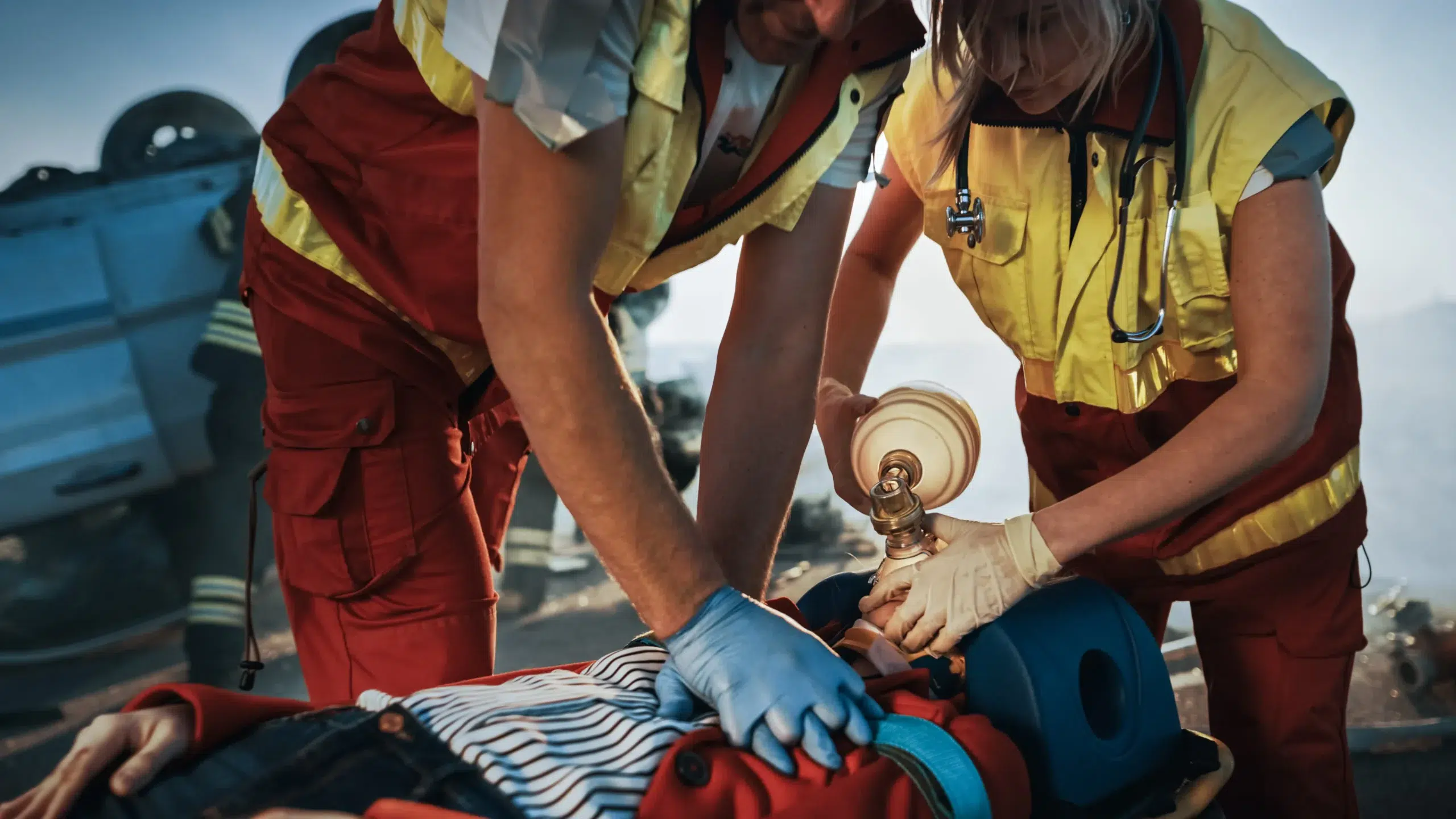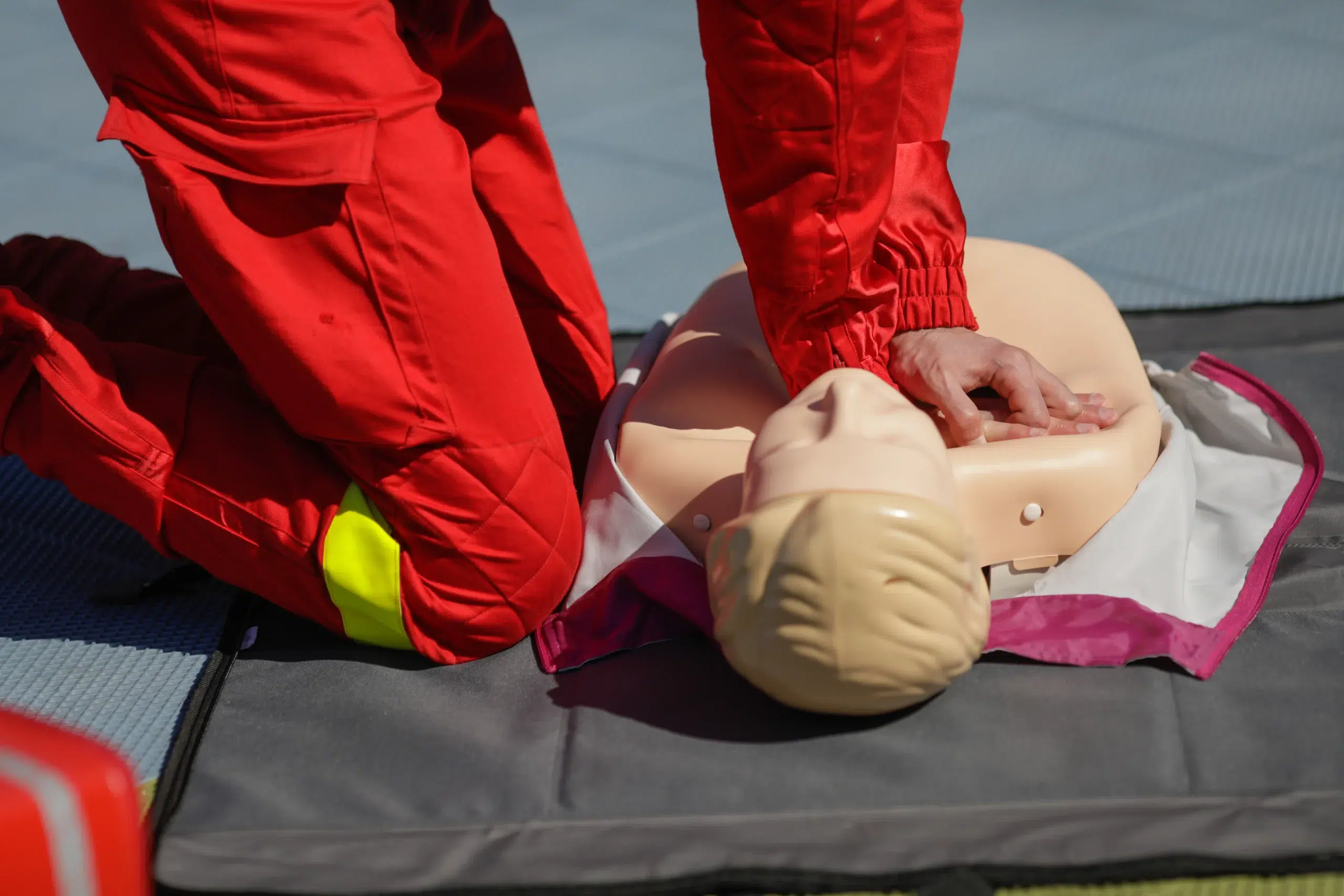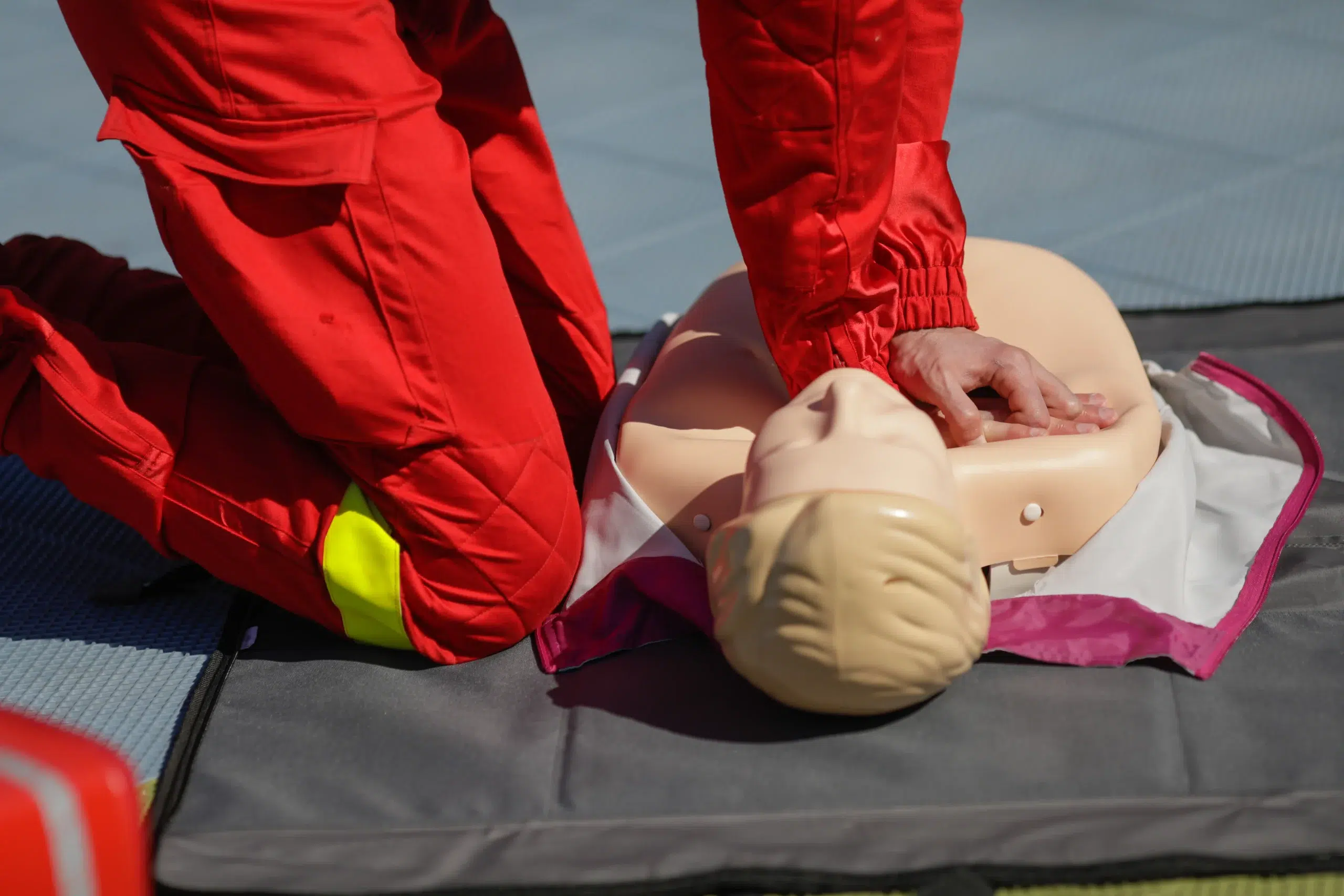Faced with a medical emergency, seconds can feel like hours. Knowing how to respond quickly and effectively can mean the difference between life and death. That’s where BLS training comes in. BLS, which stands for Basic Life Support, provides the essential skills to assist someone experiencing a cardiac arrest, stroke, choking, or other life-threatening event. This guide will walk you through the what, why, and how of BLS training, including how to find “bls training near me” and choose the right course for your needs. Let’s equip you to be someone’s lifeline.
Key Takeaways
- BLS training empowers you to act in emergencies: From CPR and AED use to airway management, BLS skills can make a real difference. Find a course format—online, in-person, or blended—that works for you.
- Select a reputable BLS training provider: Look for AHA certification, experienced instructors, and comprehensive course content. Consider cost, location, and available resources when choosing.
- Prepare yourself to help others: BLS certification is a valuable asset, whether for your profession or personal life. Explore training options and invest in your ability to respond confidently in a crisis.
What is BLS Training & Why is it Important?
BLS stands for Basic Life Support. It’s a critical training program that teaches people how to respond to life-threatening emergencies. BLS equips you with the skills to potentially save a life, whether you work in healthcare or not. It focuses on providing immediate care until more advanced medical help arrives. This training covers essential techniques like CPR, using an AED (automated external defibrillator), and relieving airway obstructions. These skills are crucial in various emergencies, including heart attacks, strokes, near-drowning incidents, and choking. Learning BLS means you’re prepared to act quickly and confidently in a crisis.
Key BLS Skills
BLS training gives you the skills to perform high-quality CPR for adults, children, and infants. You’ll learn how to use an AED, a portable device that can help restore a normal heart rhythm. Airway management is another crucial component, teaching you how to open and maintain someone’s airway so they can breathe. BLS courses also cover how to recognize the signs of a cardiac arrest or other life-threatening emergencies. You’ll practice these skills in a safe environment, giving you the confidence to use them in a real emergency. For specific training needs, explore resources like Basic Life Support Training for comprehensive guides.
Who Needs BLS Certification?
BLS certification is essential for anyone working in healthcare. Think doctors, nurses, paramedics, and other medical professionals. It’s often a job requirement in these fields. However, BLS certification isn’t just for healthcare providers. Many other professions benefit from this training, including teachers, lifeguards, coaches, and childcare providers. Even if it’s not required for your job, having BLS training can be invaluable. It empowers you to assist family members, friends, or even strangers during a medical emergency. If you’re looking for training options, research resources on finding BLS classes.
Find the Right BLS Training
So, you’re ready to get your BLS certification—great! Now, it’s time to find the right training program. With several options available, choosing the best fit for your needs is essential.
Evaluating BLS Providers
When selecting a BLS provider, consider factors like course format (online, in-person, or blended), cost, and the training center’s reputation. Look for providers who offer American Heart Association (AHA) certified courses for the most widely recognized certification. Convenient location and flexible scheduling options are also important, especially for busy schedules. Finally, check if the provider offers additional resources, like practice materials or refresher courses, to support your ongoing learning. A good training provider will set you up for success beyond the initial certification.
Safety Training Seminars: Your San Jose BLS Solution
If you’re in the San Jose area, Safety Training Seminars offers a comprehensive range of AHA courses, including BLS certification. We’re located in San Jose and serve the surrounding communities of Santa Clara and Sunnyvale. Our courses cover essential life-saving techniques, including CPR, AED use, and how to recognize and respond to life-threatening emergencies. We offer competitive prices and a low-price guarantee, ensuring you receive high-quality training at an affordable cost. Our dedicated customer service team is available to answer your questions and help you find the perfect course.
Other Reputable BLS Options
While we’d love for you to train with us, we understand you might want to explore all your options. Here are a few other reputable organizations that offer BLS training:
American Heart Association
The AHA develops the guidelines and standards for CPR and emergency cardiovascular care. While online learning offers flexibility, the AHA requires an in-person skills assessment component for BLS certification. Check their website for certified training centers in your area.
American Red Cross
The American Red Cross also offers BLS training for individuals and teams. They provide various course formats, including in-person classes and blended learning experiences that combine online learning with hands-on skills sessions.
Local Hospitals & Medical Centers
Many hospitals and medical centers offer BLS training courses to their staff and the community. These courses often incorporate specialized techniques relevant to the hospital setting. Contact your local hospitals to inquire about their programs.
Community Colleges
Community colleges often provide affordable and accessible BLS training courses. These courses cater to both healthcare professionals and the general public, making them a great option for convenient and cost-effective training. Check with your local community college for course availability and registration information.
Choose the Right BLS Format
Finding the right BLS training means understanding the different course formats. Each format suits different learning styles and schedules, so think about what works for you. Let’s explore the pros and cons of each option.
In-Person BLS Classes
In-person BLS classes offer a structured, hands-on learning environment. You’ll work directly with a certified instructor who provides personalized feedback and answers your questions. This format emphasizes practical skills through demonstrations, simulations, and practice scenarios. This hands-on training is invaluable for building confidence and mastering life-saving techniques. In-person classes also create a supportive learning environment. However, in-person training requires a fixed schedule and commuting to a physical location, which might not work for everyone.
Online BLS Courses
Online BLS courses offer flexibility. You can learn at your own pace, anytime, anywhere, fitting the training around your schedule. These courses often use interactive elements like videos, quizzes, and virtual simulations. Online learning works well for those who prefer self-directed study or have limited time. However, it requires self-discipline to dedicate enough time to the material.
Blended Learning
Blended learning combines online and in-person instruction. You’ll complete the theoretical coursework online, then attend an in-person skills session to practice. This hybrid approach balances flexibility and hands-on learning. It lets you absorb information at your own pace while still interacting with an instructor and practicing skills.
Comparing Formats: Pros & Cons
The best BLS format depends on your learning preferences, schedule, and budget. In-person classes offer immediate feedback and hands-on practice, while online courses offer flexibility. Blended learning combines both. Consider cost, location, and the training center’s reputation when making your decision. Safety Training Seminars offers all three formats, letting you choose the BLS training that best suits your needs.
BLS Training: Costs & Logistics
Getting BLS certified involves a few key considerations—cost, time commitment, and finding the best deals. Let’s break down these logistics so you can plan effectively.
Typical BLS Certification Costs
BLS certification costs vary. Think anywhere from $75 to $150, depending on the training provider, location, and course format. Some providers might include extras like study materials or online resources in their pricing, while others offer them separately. It’s always smart to compare options and see what’s included before committing.
Course Length & Certification Validity
Most BLS courses run for a single day, typically a few hours of focused instruction and hands-on practice. This efficient format makes it easy to fit certification into your busy schedule. BLS certification is typically valid for two years. After that, you’ll need a refresher course to stay current with the latest guidelines and maintain your credentials. This ensures you’re always prepared to provide high-quality care. As the American Heart Association notes, BLS training equips healthcare providers with the skills to respond effectively in emergencies.
Discounts & Promotions
Many training centers offer discounts, especially for groups, students, or returning customers. Keep an eye out for seasonal promotions or early bird registration deals to save on your certification. Sometimes, bundling BLS certification with other courses like First Aid or ACLS can also unlock discounts. Check our CPR and First Aid courses for potential combined savings.
Safety Training Seminars’ Competitive Pricing
At Safety Training Seminars, we believe in providing high-quality training at competitive prices. We offer a low price guarantee, ensuring you get the best value. Our San Jose location offers convenient access to BLS training for residents of San Jose, Santa Clara, and Sunnyvale. Check our BLS course schedule to find a class that works for you.
Get Quality BLS Training: Instructors, Content & Support
Choosing the right BLS training course involves more than just finding a convenient location. It’s about ensuring you receive high-quality instruction, learn the most current material, and have access to support when you need it. Here’s what to look for:
Qualities of Great BLS Instructors
Great BLS instructors bring more to the table than just their certifications. They’re skilled communicators who can clearly explain complex medical concepts and demonstrate life-saving techniques in a way that’s easy to understand. Look for instructors who foster an engaging learning environment, encourage questions, and provide ample opportunities for hands-on practice. This practical approach ensures you gain the confidence and skills to perform BLS effectively in real-life situations.
American Heart Association Certification Standards
A key factor in selecting a BLS provider is ensuring they adhere to recognized standards. The American Heart Association (AHA) sets the benchmark for emergency cardiovascular care. Choosing an AHA-accredited training center, like Safety Training Seminars, guarantees your training aligns with the latest guidelines and best practices. This is essential for providing the highest quality care and ensures your certification is widely accepted.
Course Content & Skills
A comprehensive BLS course covers a range of essential skills. You’ll learn high-quality CPR for adults, children, and infants, how to use an automated external defibrillator (AED), and effective airway management techniques. The curriculum should also address team dynamics and communication during emergencies. Make sure the course you choose covers all these key areas to prepare you thoroughly for various emergency scenarios.
Post-Training Resources & Support
Your learning journey shouldn’t end when you receive your BLS certification. A reputable training provider offers resources and support beyond the classroom. This might include access to online refresher materials, updates on new guidelines, or opportunities for continuing education. Look for providers who offer a digital certificate and easy access to your training records, simplifying recertification when the time comes. At Safety Training Seminars, we’re committed to supporting you throughout your BLS journey.
Related Articles
- BLS Classes in Santa Clara: The Complete Guide – San Jose CPR Classes
- BLS Certification in San Jose: Your 2023 Guide – San Jose CPR Classes
- BLS Courses in San Jose: Your Complete Guide – San Jose CPR Classes
- BLS Certification in San Jose: Your Comprehensive Guide – San Jose CPR Classes
- BLS Certification in San Jose: A Guide for Healthcare Providers – San Jose CPR Classes
Frequently Asked Questions
Is BLS certification the same as CPR certification? BLS certification is more comprehensive than CPR certification alone. While CPR is a core component of BLS, BLS training also covers other essential life-saving skills like using an AED and relieving airway obstructions. It provides a broader understanding of emergency cardiovascular care. Think of CPR as one tool within the larger BLS toolkit.
How long does it take to get BLS certified? BLS courses are designed to be efficient, often completed in a single day. The exact duration can vary slightly depending on the training provider and course format, but you can typically expect a few hours of focused instruction and hands-on practice.
How long is my BLS certification valid? BLS certification is typically valid for two years. To maintain your credentials and stay up-to-date with the latest guidelines, you’ll need to complete a refresher course before your certification expires.
What if I have a busy schedule? Are there flexible training options? Absolutely! BLS training is available in various formats to accommodate different schedules. In-person classes offer a structured learning environment, while online and blended learning options provide more flexibility for those who prefer self-paced study or have limited availability.
How do I choose the right BLS training provider? Look for a training provider that offers AHA-certified courses, convenient locations, and flexible scheduling. Consider factors like cost, instructor experience, and the availability of additional resources like practice materials or refresher courses. Reading reviews and comparing options can also help you make an informed decision.


